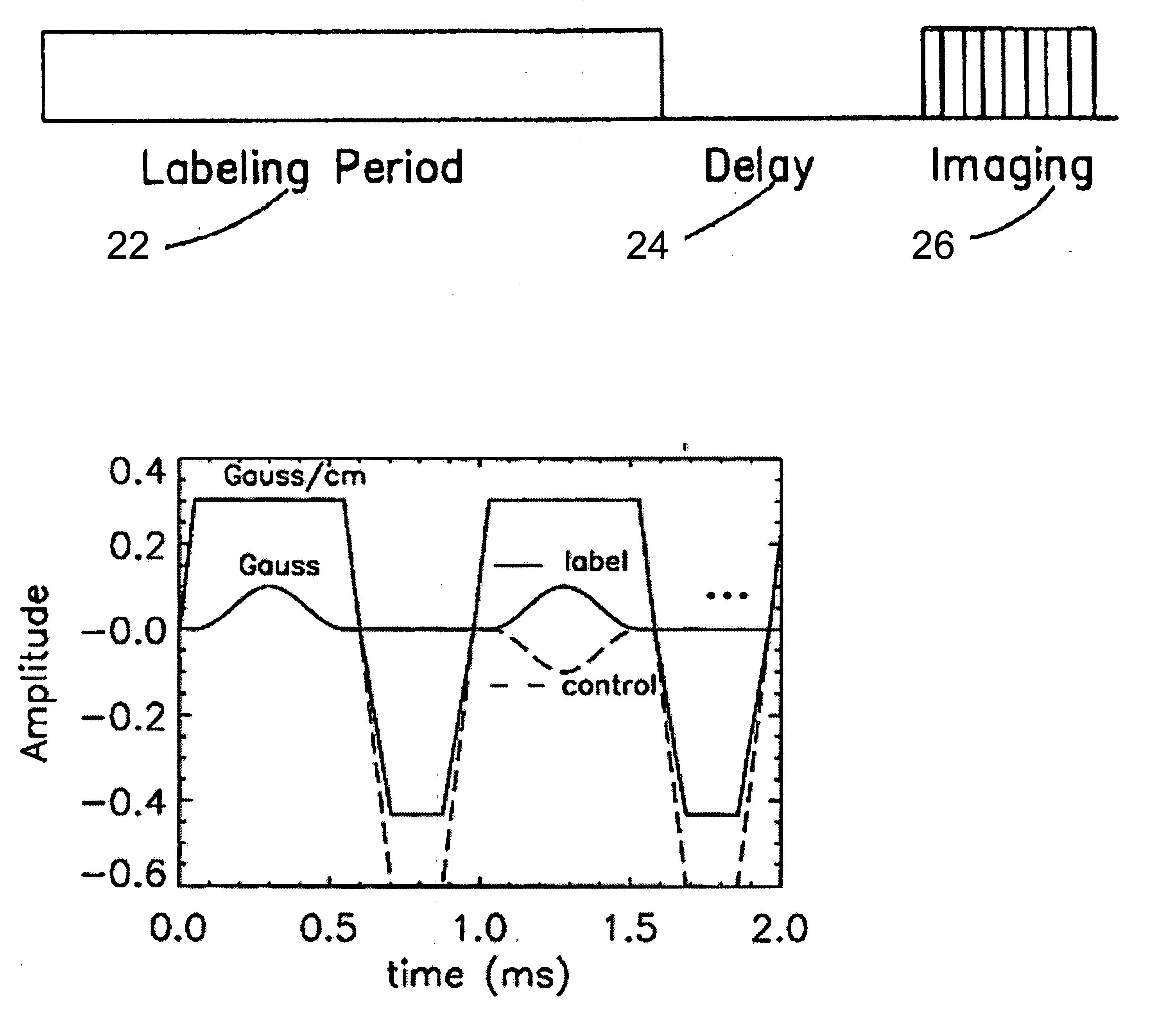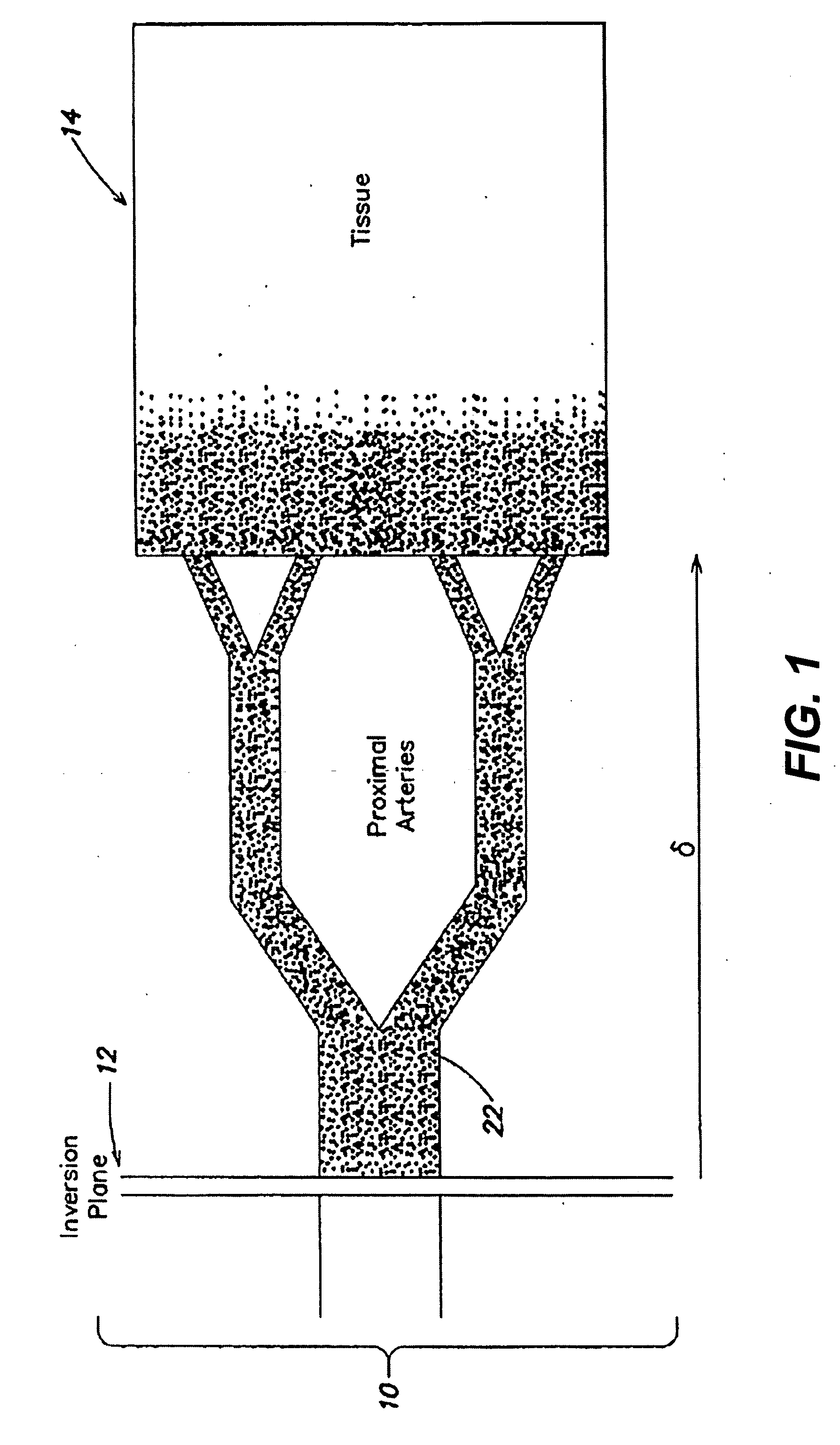Arterial spin labeling with pulsed radio frequency sequences
a pulsed radio frequency sequence and arterial spin technology, applied in the field of magnetic resonance imaging (mri) using spin labeling techniques, can solve the problems of increased rf power deposition, artifacts in reconstructed images, and drawbacks of conventional rf sequences
- Summary
- Abstract
- Description
- Claims
- Application Information
AI Technical Summary
Problems solved by technology
Method used
Image
Examples
Embodiment Construction
[0025] As discussed above, blood flow and / or perfusion imaging may be performed via various spin labeling techniques. Image artifacts resulting from magnetization transfer effects may be addressed by using both labeling and control procedures. A number of suitable RF sequences for labeling and control procedures are described in U.S. Pat. No. 6,717,405 B2 ('405), entitled “ARTERIAL SPIN LABELING USING TIME VARYING GRADIENTS,” which is herein incorporated by reference in its entirety. In particular, the '405 patent describes various magnetic gradient and RF sequences suitable for obtaining relatively high-sensitivity NMR data.
[0026] However, the RF sequences disclosed in the '405 application may not be capable of being implemented on commercially available magnetic resonance imaging apparatus and / or may deposit unnecessary amounts of RF energy into tissue being imaged. In particular, the '405 patent is directed to continuous arterial spin labeling (CASL), which typically requires ne...
PUM
 Login to View More
Login to View More Abstract
Description
Claims
Application Information
 Login to View More
Login to View More - R&D
- Intellectual Property
- Life Sciences
- Materials
- Tech Scout
- Unparalleled Data Quality
- Higher Quality Content
- 60% Fewer Hallucinations
Browse by: Latest US Patents, China's latest patents, Technical Efficacy Thesaurus, Application Domain, Technology Topic, Popular Technical Reports.
© 2025 PatSnap. All rights reserved.Legal|Privacy policy|Modern Slavery Act Transparency Statement|Sitemap|About US| Contact US: help@patsnap.com



